Black pine: description, varieties, planting and care
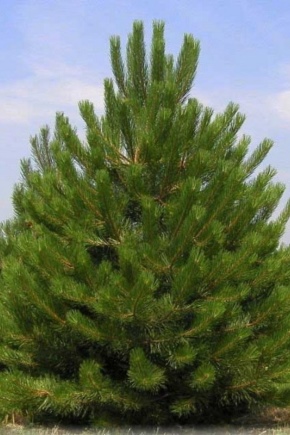
People love it when evergreens surround the places where they rest. Pines are best suited for this. They have different shapes and sizes, both in width and height. In summer, these plants protect from the heat, giving the air the taste of pine needles, and in winter they delight us with their green crown, reminding us of summer. Black pine is the best suited for planting in places where people rest.
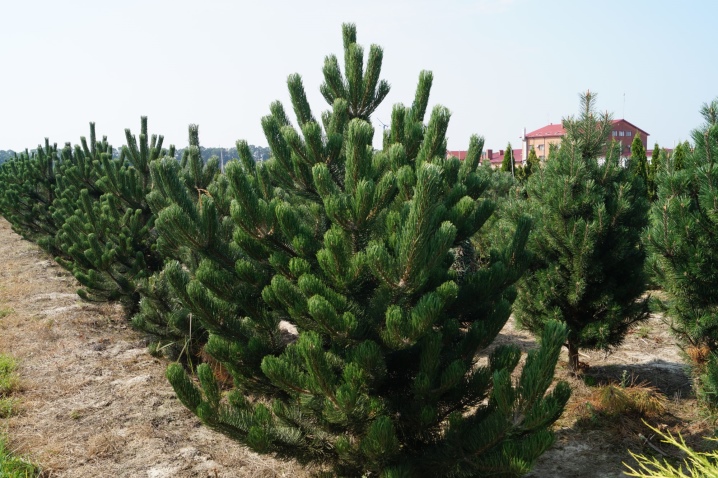
Description
To decorate your site, plant black pine. This type of evergreen tree has many options and will benefit from the beauty of all other colorful plantings, as well as the personality of your home. Australian pine or black pine (in Latin Pinus nigra) grows mainly in the northern Mediterranean, Morocco and Algeria. However, if we take into account that this planting has long been used by people as a decorative one, then we can safely speak of its wide distribution throughout the globe. This tree has a pyramidal shape (later it takes the form of an umbrella) and can reach a height of 20 to 55 meters. Sizes vary depending on the species. At the same time, the trunk has a straight shape, it is black with bright grooves. For the first 10 years, the growth rate follows the maximum scale.
Pine grows in mountainous places on calcareous soils and on igneous rocks in places well lit by the sun. Moreover, it has a relative frost resistance. Although there is evidence that in Moscow this species of pine often freezes, therefore it develops poorly. But the tree tolerates drought quite well. An evergreen plant can live for over 800 years and has an excellent root system. The roots go deep into the soil, which makes it possible for the plant not only to grow well, but also to stay on mountain peaks. That is why black pine is called mountain pine in Europe.
Its shoots are gray. The needles, while the plant is young, have a bright green color. Later, it becomes darker and takes on brown tints. The needles of this species are sharp and long (15 cm), and the cones are ovoid (yellow-brown color). They are filled with seeds (6 mm).
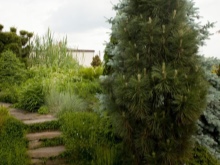
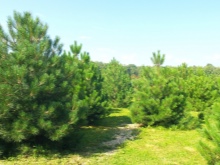

It takes three years for the bump to open. If we talk about its purpose in nature, then this graceful plant is an excellent specimen and can benefit people in the form of an aesthetic planting in parks and plots.
Subspecies
Pinus nigra, namely this coniferous plant, is divided into two subspecies: western and eastern. The first species includes salzmannii, corsicana, mauritanica. The second species includes nigra, pallasiana, caramanica. These two subspecies also have their own varieties. Further, these varieties are divided into varieties that differ in variety. Thanks to careful selection work, green spaces were born with impeccable forms. Their height ranges from dwarf sizes to sizes reaching up to the sky.
Popular varieties
Consider the most popular varieties.
- Variety "Nana" differs among all the variety with a fluffy and dense crown. It is suitable for growing in the Middle Lane, not demanding to care for. It grows in length by about 4 meters. Pine has a number of advantages: it is resistant to fungal diseases, it adapts well to habitat conditions.But there are drawbacks: it grows poorly if there is little moisture, and also does not tolerate dense soil well.
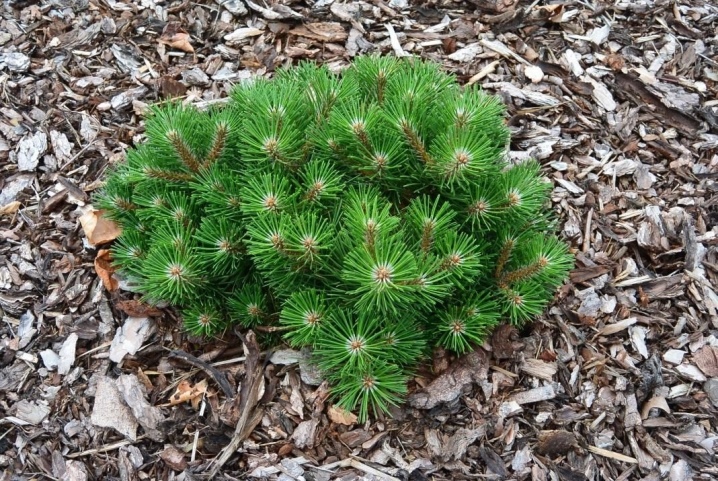
- Quite a tall tree "Pyramidalis" has an ovoid shape. An adult plant grows up to 8 m in length. The needles are hard, dark green.
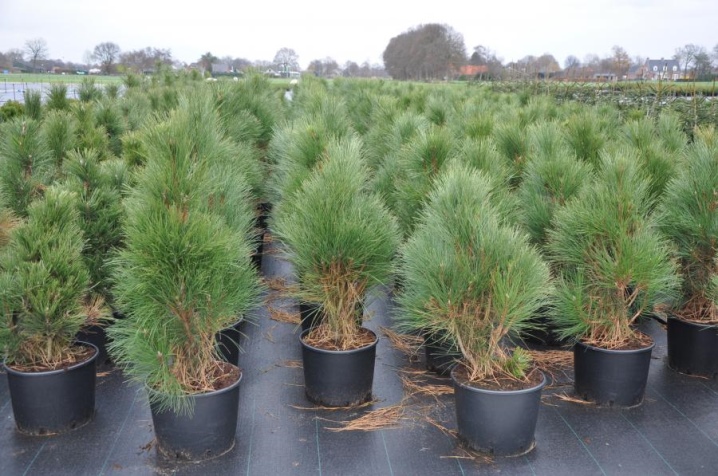
- The dwarf shrub has an evergreen appearance - it is thuja "Globoza"... It grows very slowly and is used in the design of parks and summer cottages. The crown is thick. Among all shrubs, this variety is considered a long-liver.
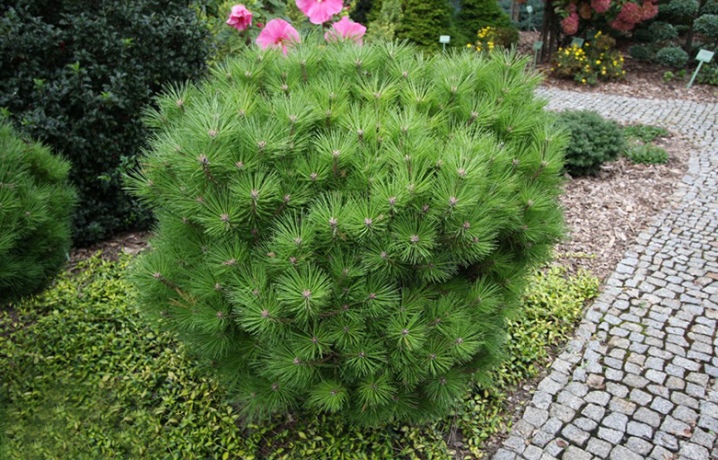
- Variety "Fastigiata" found both in Europe and in Central Asia and the Urals. It is used in interior design. The crown is narrow, columnar with a bluish accent. This variety can grow up to 15 m. The branches grow upward. The tree blooms in spring. The root system is good, but does not tolerate heavy soil.

- Ideal for the Middle Lane and the Moscow region grade "Oregon green"... It is used for various compositions in landscape design. The pine tree grows up to 15 meters in the form of a pyramidal or conical shape. She is able to adapt to gas-polluted cities, she is photophilous, but she feels great in the shade. Excessive sun will usually burn the plant. The pine tree has hard, short needles. They keep on shoots for a long time. Cones are beautiful elliptical.
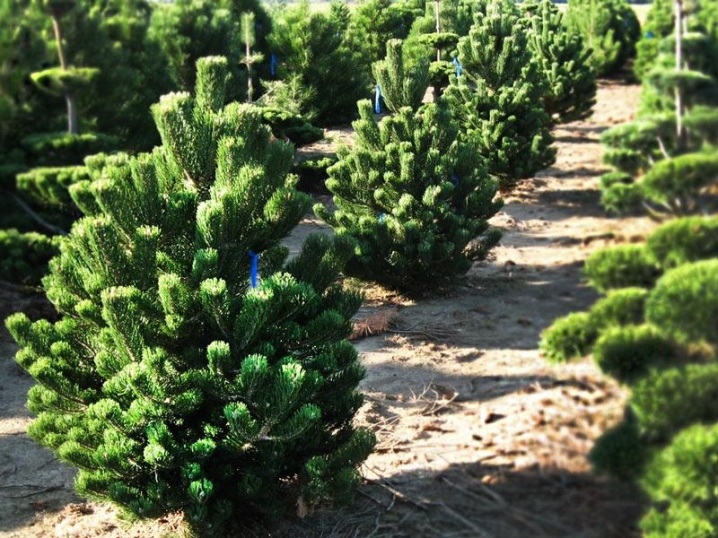
- Pine "Green Rocket" has a columnar and narrow crown. Its height ranges from 5 to 10 m. It has presentable dark green needles and is often used for landscaping backyard areas. This evergreen plant tolerates frost well, strong winds, is resistant to diseases, withstands both a lack of light and the scorching sun. The pine tree is suitable for planting in the city.
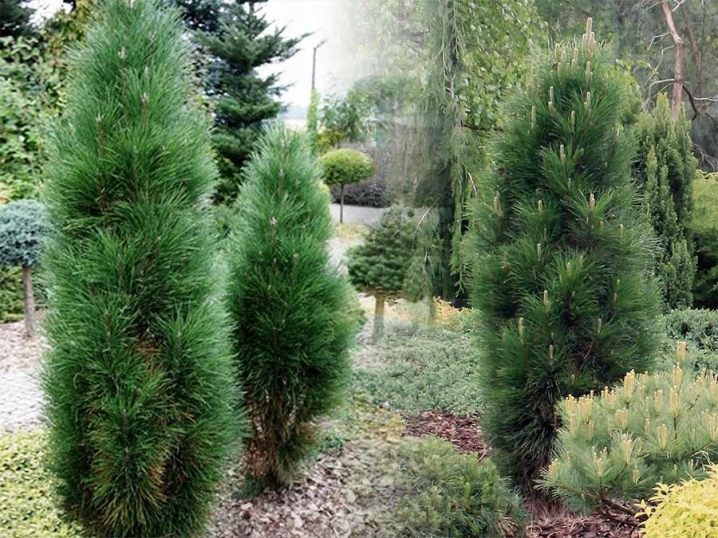
- Variety "Spielberg" has a rather attractive appearance due to its spherical shape. It grows up to 1.5 meters. This pine grows well in any soil. Pine pests are not terrible. It is mainly suitable for planting in gardens for decoration.

- The globular variety bred in Poland is Hornibrookiana. It grows up to 1 meter and has a diameter of 1.2 m. The needles are 12 cm long, they are light green. The light-loving plant perfectly tolerates any soil: alkaline, saline. Pine lends itself to pinching, used for design.
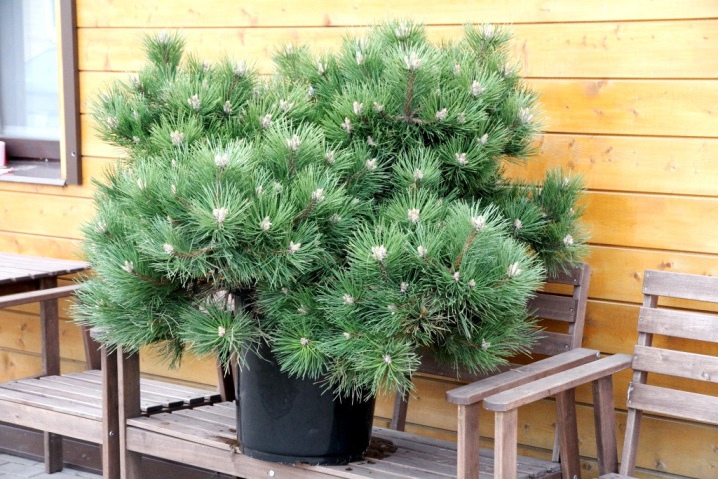
- The regular spherical shape has the next variety of black pine - "Brepo"... At 10 years old, this variety reaches half a meter in height. The specimen is very beautiful, grows in warm climates and is not picky about moisture. In most cases, it is grown in containers on terraces and balconies.
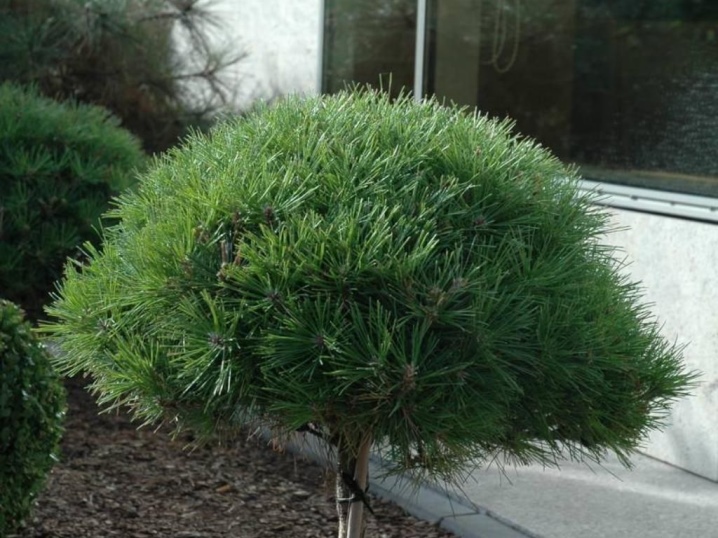
- The dense crown of a conical shape is inherent Helga variety... For 10 years, it grows only one meter. This variety is used for decoration in gardens.
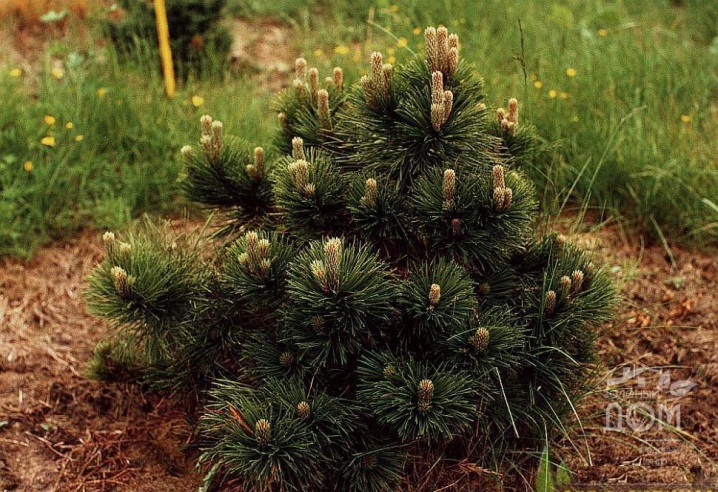
- Thanks to breeding work, it was brought to Russia japanese pine... Now it can withstand severe frosts, but it still takes root well only where it is warm, for example, in the Crimea. It is of several types, has one or more trunks. The needles are unusual, slightly curved at the end. This unique variety can reach heights of more than 20 meters, while bonsai breeders have created more than 50 species of Japanese pine, which are grown in pots, to guide bonsai. These trees are unpretentious.
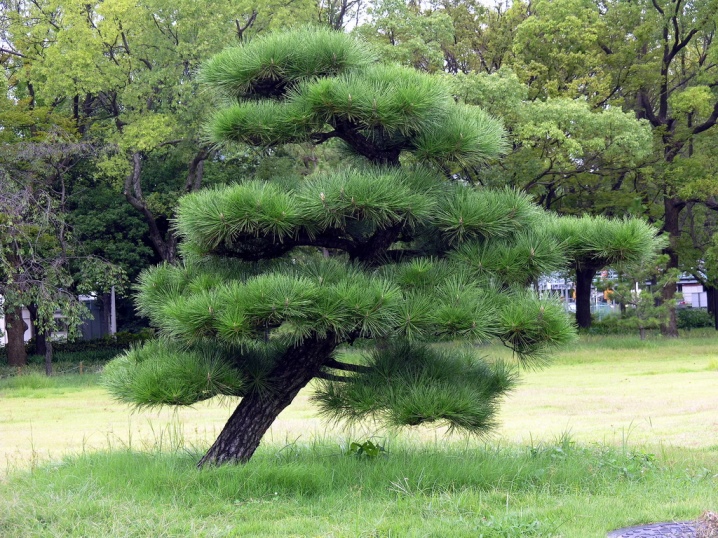
- "Marie Bregon" is a globular bush. It is photophilous, frost-hardy, disease resistant, suitable for growing on rocky surfaces.

- Green tower variety grows up to 6 meters in height. It has a rich green needles. Pine grows quickly, light-requiring, purifies the air, is not afraid of the wind. However, it needs to be treated frequently with copper-containing preparations. It tolerates any soil. Its appearance is similar to "Pyramidalis".
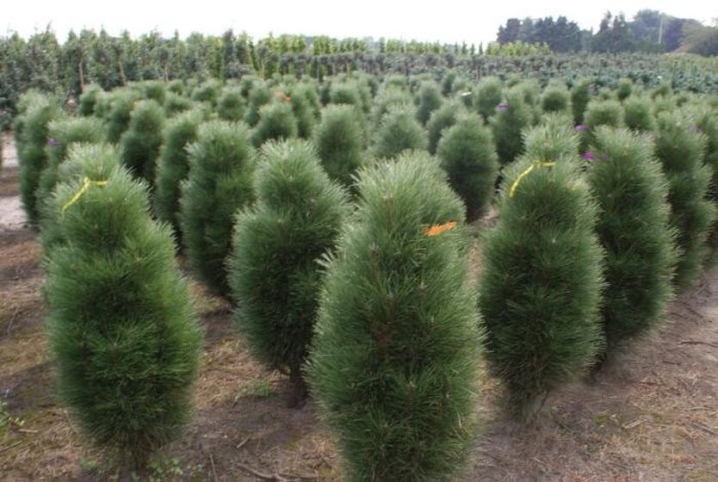
How to choose?
To answer the question of why pines are planted on the site. It is necessary to initially answer another question - how to choose the right pine. If you have a small plot, then a variety that provides for too high growth and a spreading crown will not suit you. When the tree reaches its natural length and width, it can block most of the area from the sun's rays. Then less stunted plants will be left without the right amount of light. In other cases, in large areas, you can decorate the walking areas with trees with small growth and a conical shape, and plant tall plants in the recreation area. So this site will be in the shade, and this place will be associated with rest in the forest.
Therefore, it is necessary to carefully approach the choice of the variety. There is no shortage of this issue now. There are varieties that grow symmetrically upwards, and there are those that spread. Multiple decorative hybrids are best suited for decoration. The trees must be selected taking into account the size and occupancy of the site. This type of plantation does not tolerate transplantation, so think carefully about their location in advance. Consider both the climate and the composition of the soil, since not all varieties can tolerate negative factors.
If you want an evergreen that is always pleasing to the eye, it needs to be healthy. Pines with an age of 2 to 5 years take root well. In tree nurseries, young growth is sold in containers along with a lump of earth.
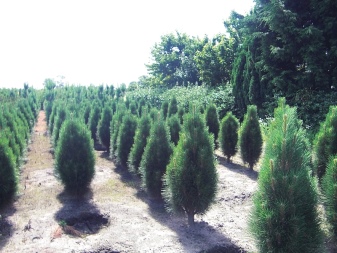
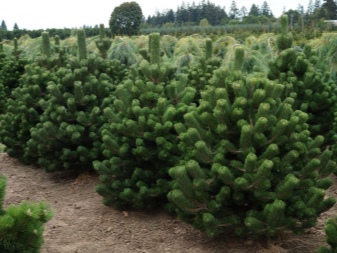
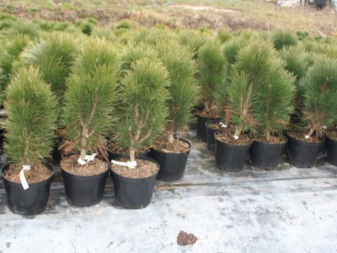
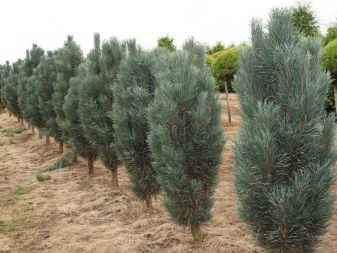
If you will not plant the purchased tree immediately, then water it abundantly. Pay attention to the appearance of the pine. It should not have yellowed needles and be skewed. Ask the seller how quickly the tree you decide to buy will grow.
How to plant?
First you need to consider general recommendations.
- Pines are best taken when planted in spring (late April to late May) or fall (mid September to late October). Choose the most illuminated area, although some varieties do not require a lot of sun. Without light, seedlings can stretch out, and the needles will turn pale.
- You will do the right thing if you choose planting material in the region where you live. The climate in which the tree is used to being will allow it to take root better.
- Young green space should be in a pot. When planting, it will take root so better. The tree should be between 3 and 5 years old.
- If your soil is sandy and loose, the roots will go deep into the ground. If, on the contrary, the soil is heavy, then they will stretch horizontally along the ground.
When digging a plant in the forest, remember that the pine gets used to the location of the cardinal points. Consider this nuance when planting a forest plant.
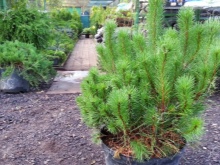
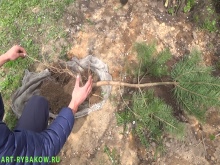
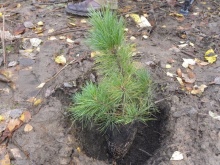
After general information, read the following instructions:
- it is best to dig a hole for planting pine trees two weeks before the main process, choose the size of the hole individually for each case; it all depends on the soil - on heavy soils, the hole should be large and deep, but remember that the roots should not be cramped;
- line the bottom of the pit with expanded clay or broken brick and sprinkle this layer with sand to ensure drainage;
- if you need to tie up a seedling, then drive a peg into the bottom; this option should be used when you have a tall specimen for planting;
- be sure to prepare a soil mixture - this is turf, a little lime, sand; if you doubt the fertile quality of the soil, then add a little fertilizer for conifers to this composition; just before planting, pour a small amount of prepared soil onto the bottom;
- set a young plant so that its roots, which have broken out of the earthen coma, straighten; sprinkle the roots carefully and completely fill the hole;
- pour water on the tree abundantly (if it is quite large, then pour almost 20 buckets of water under the very roots), then form a near-trunk circle;
- drive in a peg and tie a young pine tree with a wide strip of fabric;
- then mulch the ground around the trunk circle.
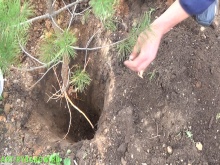
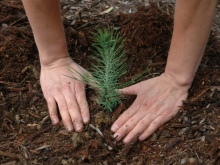
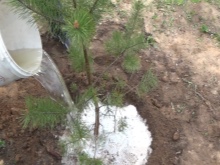
Follow-up care
There are no special requirements in this matter.The developed root system of pine will allow it to easily take root in new conditions, if you plant it correctly. In the first two years, the young plantation must be watered regularly until the root system develops. If you did not add fertilizer during the planting of the pine, then the plant needs a one-time feeding.
Be sure to loosen the soil around the trunk. Mulch after planting. For the winter, it is advisable to sprinkle ash on the ground around the tree. This will prevent the fungus from infesting the plant. Treat the crown of the pine and its trunk with insecticides from time to time, since its cultivation requires protection from diseases and pests.
Do not overdo it with fertilizers. By doing this you can only do much harm. Watering must be carefully monitored. The tree should not suffer from a lack of moisture. In the fall, it is necessary to carry out preparatory work for the wintering of a young plant. If suddenly severe frost strikes, the tree may die. It is best to cover it with a special material.
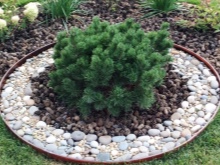
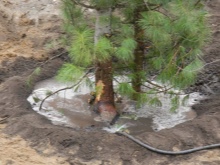

Watering
Young trees always require careful watering, which is carried out every week. If you have done the right drainage, then the roots will not die from excess moisture. In adulthood, pines tolerate a lack of moisture well. Their fallen needles cover the ground around the trunk, thereby mulching the soil. A tree with a good root system can be watered 3-4 times a season. It must be said that the Rumelian pine is an exception here, which will die if it does not get moisture.
Tip: it is best to water the pine trees by sprinkling before sunset. It is when the evaporation activity decreases. At this point, the tree is better moistened due to the creation of a special microclimate.
Watering a particular tree, you need to take into account its size and age. And also consider the flowering period and the time when the buds appear. At this point, the tree needs additional moisture. Warm standing water is best suited for watering purposes. Approximately 30 liters of water is poured under the young trees, up to 100 liters are required for adult trees. Adult plants are fed during watering, and if the soil has lost its acidity, then citric acid is added to the water.
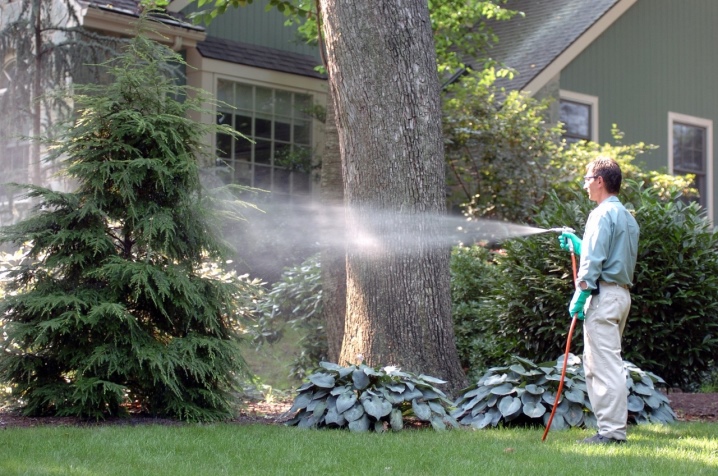
Top dressing
If you want to have a healthy and beautiful tree in your area, then you need to feed it. The best option is compost. This type of fertilizer is less aggressive for both mature plants and young ones. It is similar in composition to soil. Loosen the wheel and mix with the compost. When you water the pine, all the nutrients will be absorbed along with the water.
It is advisable to apply mineral fertilizers once a year if the instructions are followed. It is advisable to do this in the spring.
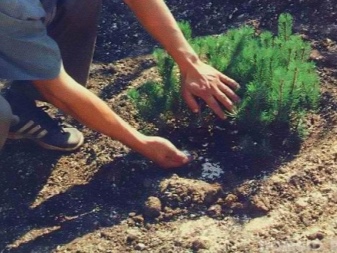

Pruning
It is carried out in order to correct the shape of the pine. If the pine tree takes on an irregular shape, then it must be corrected. This will give you an aesthetic cropping. If you want a dense crown, then pinch the tips of the young shoots.
In addition, in the spring it is necessary to carry out sanitary pruning and remove all diseased and dried branches. Pruning tools must be thoroughly disinfected.
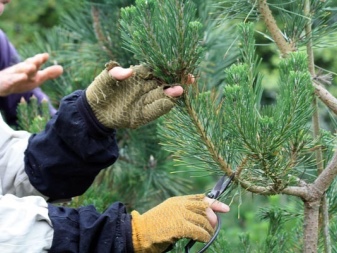
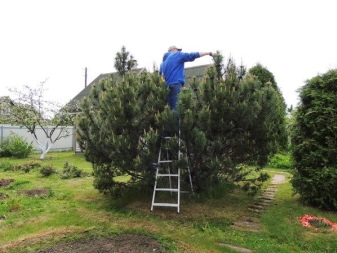
Disease and pest control
They can appear suddenly, so you should know all the information about these phenomena. When a pest starts, the tree must be treated with insecticides. It is worth considering the following pests and their manifestations:
- coniferous silkworm, scoop - the needles are impoverished;
- hermes - plaque appears;
- sawflies - yellow spots on the crown;
- pine aphid - the needles twist, dry up;
- shields - the needles are crumbling;
- bark beetle - the trunk is exposed; this pest is very insidious, its attack often leads the plant to death;
- tick - the needles dry up (tick).
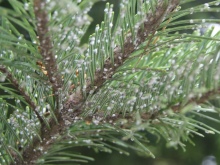
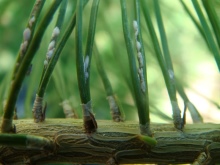

In addition to pests, there are also diseases. In case of diseases, conifers are treated with special agents - fungicides. This should be done for the following diseases:
- pine vertun - curvature of shoots;
- necrosis or scleroderriosis due to fungi - the dying off of areas of the bark, when the needles hang with an umbrella;
- cancer - pine bark becomes brown; it is necessary to clean the affected area and treat it with copper sulfate;
- rot - the needles turn yellow and crumble, the roots of the plant lose strength; it is treated by drying the soil around the tree;
- rust - the appearance of orange pads on pine needles;
- powdery mildew - darkening and falling of needles;
- shyute - microscopic specks appear on the needles;
- drying out of needles - the top shoots die off;
- verticillary wilting - roots die off;
- sclerotinous mold - the appearance of a red-brown color on the crown.


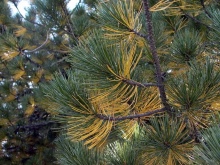
Pines reproduce best by seed. They can be planted in open ground, or you can grow a seedling in a pot (this way you will save the seed from rodents). There should be a drainage hole at the bottom of the pot. Observe the distance between seeds when sowing.
Reproduction can also be carried out using cuttings. But this method does not give good results, since a small percentage of seedlings are rooted. For cuttings, young branches are taken that grow upward. The procedure is carried out in early spring.
A 4 cm hole is made in a special container with prepared and fertilized soil. The lower part of the cutting is placed there, then it is buried. At first, it is best to organize the greenhouse effect and add soil heating. For this, containers with compost are suitable. There you need to place boxes with seedlings. Cuttings are grown in a greenhouse. It will take about a year for them to take root.
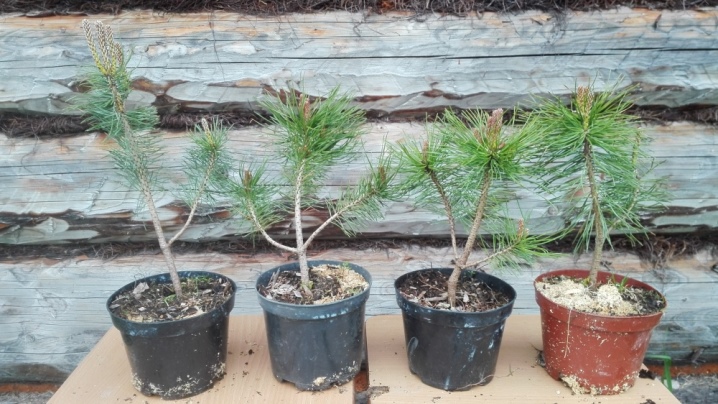
Beautiful examples in landscape design
Varieties of black pine look good both in garden plots and in places where people are just relaxing.
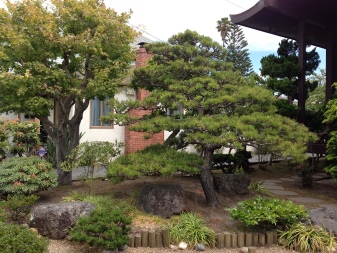

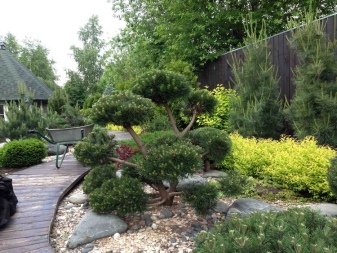
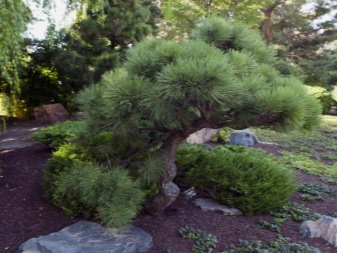
Review of the black pine variety "Honibrukiana" in the next video.



































































The comment was sent successfully.